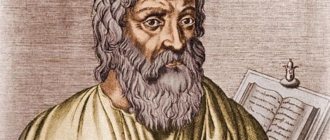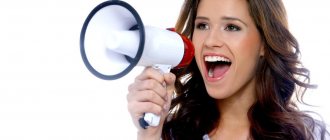Definition of the concept
Temperament is a set of stable properties of the nervous system that determine the speed and strength of the reaction to external stimuli. In simple words, these are the basic settings of the individual’s psyche. Temperament has a significant impact on human activity and behavior.
This is an innate characteristic that does not change throughout life. If you were born, for example, melancholic, then you will remain so forever. Temperament manifests itself in men and women, in children and adults, in people with different cultural backgrounds and social levels.
Temperament should not be identified with a person’s character. There are specific differences between them, which we will discuss below.
The classification is based on the following properties of the nervous system:
- Emotional excitability. How quickly a person develops an emotional reaction in response to a stimulus.
- Introversion/extroversion. Where is the main attention directed: to the inner world or to the outer world.
- Rate of reactions. How quickly mental processes occur.
- Rigidity/flexibility. Ability to adapt to changing conditions.
- Reactivity. The severity of involuntary reactions to internal and external stimuli.
- Activity. The intensity of human influence on objects of the external world.
- Sensitivity. The minimum threshold of exposure that can cause a mental reaction.
More than 100 cool lessons, tests and exercises for brain development
Start developing
Introduction
As you know, no two people have exactly the same fingerprints; no tree has two identical leaves. In the same way, no two people are the same; every person is unique.
However, a person is not born with an already formed personality. He gradually becomes a person. But even before a person becomes a person, he has individual mental characteristics. These specific mental characteristics are quite conservative and stable. They form in each person a kind of psychic soil, on which subsequently, in accordance with their expression, personality traits that are inherent only to a particular person grow. This means that the child’s psyche is not like a smooth board on which any patterns can be written, and in the process of raising and teaching a child it is necessary to rely on his qualities existing from birth. These characteristics are different for everyone. When we observe the behavior of students, how they work, study and relax, how they react to external influences, how they experience joys and sorrows, we, of course, pay attention to large individual differences between people. Some of them are fast, impetuous, impetuous - while others are slow, calm, imperturbable. It should be noted that these differences do not relate to the content of personality, but to some external manifestations. This page characterizes the concept of “temperament”.
The famous psychologist Merlin wrote: “Imagine two rivers - one calm, flat, the other fast, mountainous. The flow of the first is barely perceptible, it smoothly carries its water, there are no bright splashes, stormy waterfalls or splashes. The flow of the second is the complete opposite. The river rushes quickly, the water in it seethes, boils and turns into flakes of foam when it hits the stones...” Something similar can be observed in human behavior.
Observations have shown that all people are different not only in appearance, but also in behavior and movements. For example, if you monitor the behavior of students in the classroom, you can immediately notice the difference in the behavior and movements of each student. Some are leisurely, correct movements, noticeable calm in the eyes, while others are sudden movements, bustle in the eyes. What explains the difference in behavior? Firstly, temperament, which manifests itself in any activity (play, work, study, creative), in gait, gestures, in all behavior. The individual psychological characteristics of a person and his temperament give a unique color to all activities and behavior.
Temperament should be understood as natural behavioral characteristics characteristic of a particular person, manifested in the dynamics, tone and balance of reactions to the influences of life. Temperament colors all mental manifestations of an individual; it influences the nature of the flow of emotions and thinking, volitional influence, the pace and rhythm of speech. But we must remember that temperament does not depend on the interests or hobbies or social position and moral education of a person. The above examples lead to the understanding that temperament is a category of behavior that is a set of formal, dynamic characteristics of behavior. In this case, this primarily relates to the energy level of behavior. Scientists identify a large number of different characteristics of temperament, including impulsivity, anxiety, plasticity, emotional excitability, strength of emotions, reactivity and much more. However, the two main characteristics of temperament are general activity and emotionality.
History of the study of human temperament
The concept of temperament was first introduced by the Greek physician and philosopher Hippocrates.
He noticed that his patients responded differently to the treatment. Some recovered quickly and easily, while others required long months of rehabilitation. This was also due to the person’s own attitude towards the disease. If a person was optimistic and cheerful, then the disease receded faster. Depressed and despairing patients took much longer to recover.
This led Hippocrates to the idea that each person has stable internal characteristics that determine one or another type of reaction. He suggested that these features are associated with the predominance of one of the fluids in the body: blood, lymph, yellow or black bile. Subsequently, it was they who gave names to the four types of temperament.
According to Hippocrates:
- lymph (Greek “phlegm”) predominates in phlegmatic people;
- blood (Greek “sanguis”) predominates in sanguine people;
- bile (Greek “chole”) predominates in choleric people;
- black bile (Greek “milane chole”) predominates in melancholic people.
This classification has not lost its relevance today, almost 25 centuries later. Although Hippocrates incorrectly defined the basis for classification, he described the characteristics of each type quite accurately.
Research on temperament has been conducted throughout this time and continues to this day. Scientists such as Hans Eysenck, Carl Jung, William Herbert Sheldon and others worked on its study.
The Russian scientist Ivan Pavlov made a significant contribution to explaining the nature of temperament. It was he who connected temperament with the type of higher nervous activity and pointed out the similarity of these processes in humans and animals.
Another of our compatriots, Boris Teplov, studied the dynamic features of nervous activity, such as reaction speed, duration of mental processes, and the ability to switch from one stimulus to another. Subsequently, these studies were used to derive the physiological basis for dividing people into types.
Carl Jung proposed classifying people into introverts and extroverts according to the direction of their mental processes. Extroverts are focused on interacting with the outside world, while introverts are immersed in the inner world. Subsequently, this division will become one of the main indicators underlying the classification. Cholerics and sanguine people will be classified as extroverts, and phlegmatic and melancholic people will be classified as introverts.
Hans Eysenck created a detailed and accurate method for determining temperament, which is used today by both professional psychologists and ordinary people interested in self-knowledge.
By the way, you can find this technique in our selection of the best psychological tests.
Physiological theory of temperaments of Hippocrates
The idea and doctrine of temperaments originates in the works of the ancient Greek physician Hippocrates (5th century BC). He argued that people differ in composition in proportion to the 4 main “humors of the body” - blood (from the Latin sanguis), phlegm (from the Greek phlegma), yellow bile (from the Greek chole) and black bile (from the Greek melaina). The predominance of one of them determines a person’s temperament. The names of temperaments, given by the names of liquids, have survived to this day. Each liquid has special properties and purposes. The property of blood is warmth. Its purpose is to warm the body. The property of phlegm is cold, and its purpose is to cool the body. The property of yellow bile is dryness. Its purpose is to keep the body dry, to “dry it out.” The property of black bile is dampness. Its purpose is to retain moisture in the body. He described the main types of temperaments that are widely known in our time.
Types of temperament according to Hippocrates:
Melancholic people are people with a weak nervous system, which has increased sensitivity even to small stimuli, and strong stimuli can already cause a “breakdown”, “stopping”, confusion, “stress bunny”, therefore in stressful situations (exams, competitions, danger, etc.) .d.) an exacerbation of melancholic activity is possible in comparison with a calm, familiar situation. Increased sensitivity leads to rapid fatigue and decreased performance (a longer break is required). A minor reason can lead to resentment and tears. The mood is very changeable, but usually a melancholic person tries to hide it, does not show his feelings outwardly, does not talk about his experiences, although he is very inclined to show his experiences, he is often sad, depressed, unsure of himself, anxious, he may have a neurotic disorder. However, having a highly sensitive nervous system, they often have pronounced artistic and intellectual talents.
A sanguine person is a person with a strong, balanced, mobile nervous system, has a quick reaction, his actions are deliberate, he is cheerful, thanks to this he is characterized by high resistance to life’s difficulties. The mobility of his nervous system leads to variability of feelings, attachments, interests, views and high adaptability to new conditions. This sociable person easily comes into contact with new people and therefore has a large circle of acquaintances, which, however, is not distinguished by constancy in communication and affection. He is a productive worker, but only when there is a lot of interesting things to do, that is, with constant excitement, otherwise he becomes boring, lethargic, and absent-minded. In a stressful situation, he exhibits a “lion reaction”, that is, he actively, consciously defends himself and fights to normalize the situation.
Phlegmatic is a person with a strong, balanced, but sluggish nervous system, which is why he reacts slowly, is taciturn, slowly experiences emotions (difficult to anger, cheer), has a high working capacity, resists strong and persistent stimuli and difficulties well, but is not able to quickly react in unexpected new situations. He firmly remembers everything he has learned, cannot give up acquired skills and stereotypes, does not like to change habits, daily routine, work, friends, and is difficult and slow to adapt to new conditions. The mood is stable and even. In the face of serious difficulties, the phlegmatic person remains outwardly calm.
A choleric person is a person whose nervous system is determined by the predominance of excitation over inhibition, so he reacts very quickly, often without thinking, has no time for inhibition, restraint, shows impatience, impulsiveness, sudden movements, hot temper, and lack of restraint. The imbalance of his nervous system determines the cyclical changes in his activity and vigor: passionate about some task, he works passionately with full dedication, but his strength is short-lived, and as soon as they are depleted, he works to the point that everything is unbearable for him. An irritable state occurs, bad mood, loss of energy and lethargy (“everything falls out of hand”). Alternating positive cycles of uplift and energy with negative cycles of decline, depression leads to inconsistent behavior and well-being, increased susceptibility to neurotic breakdowns and conflicts with people.
Each of the presented types of temperament in itself is neither good nor bad (unless temperament and character are combined). Each type of temperament, manifested in the dynamic characteristics of the human psyche and behavior, may have advantages and disadvantages. People of sanguine temperament have a quick reaction, easily and quickly adapt to changing living conditions, have high performance, especially at the initial stage of work, but in the end they reduce their performance due to rapid fatigue and loss of interest. On the contrary, those whose temperament is of the melancholic type are characterized by a slow start to work, but also greater endurance. Their productivity is usually higher in the middle or at the end of a job, but not at the beginning. In general, the productivity and quality of work of a sanguine person and a melancholic person are approximately the same, but the differences relate mainly only to the dynamics of work in their different periods.
The advantage of a choleric temperament is that it is able to concentrate very well in the short term. But when working for a long time, people with temperament do not always have enough endurance. Phlegmatic people, on the contrary, cannot quickly gather and concentrate efforts, but have the valuable ability to work long and hard to achieve a goal. The nature of temperament should be taken into account when the job makes special demands on these dynamic features of the activity.
The Hippocratic classification of temperaments refers to humoral theories. Later, this line was proposed by the German philosopher I. Kant, who also considered the properties of blood to be the natural basis of temperament.
Why you need to know your temperament type
The division into temperaments is a basic classification in psychology. All other scientific classifications are mainly based on it. What does knowledge of one’s temperament give to an ordinary person, far from science?
Having defined it, you will know your innate, unchangeable characteristics. This will help you predict your behavior as accurately as possible, build the most winning strategy for action in any situation, relying on your strengths and compensating for your weaknesses.
For example, you found out that you are melancholic. Your striking features are introversion and high sensitivity. If you choose a profession that involves constant interaction with people, you will be stressed most of the time. Of course, over time your psyche will adapt to this, but the process will be quite painful. And given the weakness of the nervous system of melancholic people, the price may be too high.
Or let's take choleric people. Knowing about their excessive temper, which often turns out to be a source of serious problems, they must consciously avoid acute situations.
It's also a good idea to know the temperament types of your family, colleagues and friends. This will help you increase the effectiveness of communication with them several times. Knowing the characteristics of a particular person, you will be able to avoid sharp corners, avoid touching pain points and show empathy at a higher level.
Bibliography
- S.L. Rubinstein // Fundamentals of general psychology // St. Petersburg: Petersburg Publishing House, 2000.
- Kretschmer E. Theory of temperaments // Psychology of individual differences. Textbook. M., 2000.
- Kant. About temperament//Psychology of individual differences. Texts. M., 1982.
- W. Sheldon. Psychology of individual differences. Texts / Edited by Yu.B. Gippenreiter, V.Ya. Romanov. M., 1982.
- V.S. Merlin, Outline of a Theory of Temperament, 1973.
- Klimov E.A. Individual style of activity // Psychology of individual differences: texts. - M., 1982.
- Pastelov I.G. Temperament through the eyes of an ordinary person // Life and Health. - M., 2001.
- Ilyin E.P. Psychology of individual differences. - St. Petersburg, Peter, 2004.
Differences between temperament and character
People often equate or confuse the two, so let's be clear. Temperament, being innate and unchangeable, serves as the foundation for such a category of personality as character. Character is a set of acquired personality traits formed on the basis of temperament.
The characters of people with different temperaments may be similar, but they manifest themselves in completely different ways. For example, let’s take the quality of leadership. If a sanguine person becomes a leader due to his ability to find an approach to people, then the leadership of a choleric person is most often based on strength, submission and dominance.
The innate properties of the nervous system can predetermine the development of certain character traits. But not necessarily. As you know, the human psyche is very flexible and plastic. In some cases, compensatory mechanisms are triggered that make it possible to smooth out undesirable manifestations of congenital characteristics. What comes first here is the strength of a person’s personality, which helps him swim against the tide of the characteristics inherent in him.
Knowing this, you can find an individual approach to shaping the child’s personality. A child with any type of temperament can develop any character traits, only the methods of education will be different. And an adult can set the goal of developing certain qualities in himself and selecting suitable techniques according to his temperament.
Read more about the differences between temperament and character in a separate article.
V. V. Petukhov about Temperament - an innate condition of the body, behavioral memory
Temperament
We all know that temperament is an innate property of the body, characterized by a predisposition to certain patterns of emotional response and behavior.
Temperament is a kind of behavioral memory. Encyclopedic dictionaries provide many definitions of temperament. Temperament
(Latin temperamentum - proper ratio of parts, proportionality) is a characteristic of an individual from the dynamic characteristics of his mental activity, i.e.
tempo, rhythm, intensity of individual mental processes and states (p. 415, vol. 25, TSB). Temperament
is a characteristic of an individual in terms of his dynamic characteristics: intensity, speed, tempo, rhythm of mental processes and states.
Temperament is relatively stable and little susceptible to changes in environment and upbringing, but it changes during ontogenesis. - this is an innate property of the body (p. 435. Dictionary of conflict management. A.Ya. Antsupov, A.I. Shipilov)
.
Humoral system of explanations of the essence of temperament The first researcher of temperament was Hippocrates .
Hippocrates based on the physiological concepts of those times.
According to Hippocrates, the body was believed to contain four main fluids, or “juices”: blood, mucus (lymph), yellow bile and black bile. Mixed in certain proportions, they make up temperament. The name of the type was given by the predominant fluid in the body: melancholic, sanguine, phlegmatic and choleric temperament. · “The predominance of bile (Greek χολή, chole
, “bile, poison”) makes a person impulsive, “hot” - choleric.
· The predominance of mucus (Greek φλέγμα, phlegm
, “phlegm”) makes a person calm and slow - a phlegmatic person.
· The predominance of blood (lat. sanguis
,
sanguis
,
sangua
, “blood”) makes a person active and cheerful - a sanguine person.
· The predominance of black bile (Greek: μέλαινα χολή, melena chole
, “black bile”) makes a person sad and fearful—melancholic” (Wikipedia).
“The first psychological descriptions of temperament belong to the ancient physician Galen. Later, I. Kant systematized the doctrine of four main types - sanguine, choleric, melancholic, phlegmatic. Constitutional system of explanations of temperament
It comes from the differences and constitution of the body - its physiological structure, the relationship of parts, various tissues (E. Kretschmer, D. Sheldon, etc.).
*** V.V.
Petukhov sets out the following in his lectures: “Let’s build
Kretschmer’s typology,
build it step by step.
There will be three of these steps. 1. First. Let's call the first step this: building... or not... identifying body and establishing their connections with mental illness
.
At the first step , Kretschmer
appears before us as a researcher himself.
Let's talk about the material on which Kretschmer
.
These are his patients (he himself is a psychiatrist). And if you remember that the events took place at the beginning of the century, there were quite a lot of subjects - 260, he has good statistics. What is he doing? He tries to highlight holistic body types. It cannot be said that he acts purely intuitively, but it should be said that these types are integral structures. It doesn't list a set of properties. Anyone who has read Kretschmer
knows that each body type is represented in
Kretschmer
(and this is obligatory for him) also by a specific person - each type must have its own generalized representative.
This is the principle of typology: I show a specific person, but for me he is a generalized representative of a given body type. He identifies three main ones, we emphasize, the main ones
, because if
Kretschmer
observes that some type cannot be represented as holistic, he removes this material from the work... Three main types of bodily hypotheses.
We list these types in the following sequence: 1) Asthenic
.
And Kretschmer
introduces us to a person... let us briefly describe it this way: weak muscles - “asthenos” is “weak” - an undeveloped musculoskeletal system, sunken chest.
An asthenic person is usually a person of average height, although due to his thinness and weak physique he looks taller than his height. And the most interesting thing: for Kretschmer
, these are some key signs that Kretschmer proposes to determine even by the face.
It happens that over the course of life a person’s physique changes, it happens that [he] uses means of controlling his body... But there are key signs that are difficult to overcome... There are so-called. corner profile
.
If you look at the face of an asthenic person in profile, you will see an elongated nose and a poorly developed chin. (Then he will identify and classify famous people of whom only portraits have survived to this type.) 2) The second type is athletic
.
And in this case, the athlete hardly needs a detailed description. This is, generally speaking, the standard of male beauty. (It will happen, let’s get ahead of ourselves, that this type will not become the main one and will no longer be used for conclusions.) Here we mean a person of athletic build: a large head... and a figure with broad shoulders, as if gradually tapering downwards. Photographs of athletes fully correspond to strong men, the generalized idea of a strong man at the beginning of the century. 3) The third type Kretschmer
calls
picnic
.
This figure turns out to be just the key one. A feature of the picnic body is, as it were, the most complete development of the internal cavities - a large head... (By the way, I take this opportunity to congratulate dear women on March 8th and say that Kretschmer
also took into account the female physique in his research, but it turned out to be so variable that he could not identify clear types, and here we are talking only about men...) ...A large head, which goes almost without a neck into an even larger chest, and the figure, unlike an athletic one, expands downward, because the chest should go into an even larger voluminous belly.
Many picnics can also take care of their physique. And then in the face - this is the so-called. pentagonal face
- sharply defined cheekbones, usually pronounced ... ".
Here is an example of how A. Chekhov’s story “Fat and Thin” reveals the psychological differences between two friends in temperament: thin as a choleric person and fat as a sanguine person.. In the “portraits” of two friends, Chekhov noted a tendency to specific emotional reactions and moods. Subtle: fast, impetuous, but completely unbalanced, with sharply changing moods with emotional outbursts, quickly exhausted. He does not have a balance of nervous processes, this sharply distinguishes him from a sanguine person. Thin, like a choleric person, he has a tremendous capacity for work, however, when he gets carried away, he carelessly wastes his strength and quickly becomes exhausted. Toasted: a lively, hot, active person, with frequent changes of impressions, with a quick reaction to all the events happening around him, quite easily reconciling with his failures and troubles. He is as thick as a sanguine person and has expressive facial expressions. He is very productive at work when he is interested. If the work is uninteresting, he treats it indifferently and becomes bored. “Two friends met at the Nikolaevskaya railway station: one fat, the other thin. The fat man had just had lunch at the station, and his lips, coated with oil, were shiny like ripe cherries. He smelled of sherry and orange blossom. The thin one had just left the carriage and was laden with suitcases, bundles and cardboard boxes. He smelled of ham and coffee grounds. Peeking out from behind him was a thin woman with a long chin - his wife, and a tall high school student with a squinted eye - his son. - Porfiry! - the fat one exclaimed when he saw the thin one. - Is that you? My darling! How many winters, how many years! - Fathers! - the thin one was amazed. - Misha! Childhood friend! Where did you come from? The friends kissed each other three times and looked at each other with eyes full of tears. Both were pleasantly stunned. - My dear! - the thin one began after kissing. - I didn’t expect it! What a surprise! Well, take a good look at me! Just as handsome as he was! Such a soul and a dandy! Oh, my God! Well, what are you doing? Rich? Married? I’m already married, as you can see... This is my wife, Louise, nee Vanzenbach... Lutheran... And this is my son, Nathanael, a third-grade student. This is Nafanya, my childhood friend! We studied together at the gymnasium! Nathanael thought for a moment and took off his hat. We studied together at the gymnasium! - continued the thin one. - Do you remember how they teased you? They teased you as Herostratus because you burned a government book with a cigarette, and they teased me as Ephialtes because I loved to tell lies. Ho-ho... We were children! Don't be afraid, Nafanya! Come closer to him... And this is my wife, nee Vanzenbach... a Lutheran. Nathanael thought for a moment and hid behind his father. - Well, how are you doing, friend? - asked the fat man, looking at his friend enthusiastically. - Where do you serve? Have you achieved the rank? - I serve, my dear! I have been a collegiate assessor for the second year now and I have Stanislav. The salary is bad... well, God bless him! My wife gives music lessons, I privately make cigarette cases out of wood. Great cigarette cases! I sell them for a ruble apiece. If someone takes ten grand or more, then, you know, there is a concession. Let's make some money. I served, you know, in the department, and now I’ve been transferred here as the head of the same department... I’ll serve here. Well, how are you? Probably already a civilian? A? “No, my dear, lift it higher,” said the fat man. - I have already reached the rank of secret... I have two stars. The thin one suddenly turned pale and petrified, but soon his face twisted in all directions with a broad smile; it seemed as if sparks were falling from his face and eyes. He himself shrank, hunched over, narrowed... His suitcases, bundles and cardboard boxes shrank, wrinkled... His wife's long chin became even longer; Nathanael stood tall and fastened all the buttons of his uniform... - I, Your Excellency... It’s a pleasure, sir! A friend, one might say, from childhood, and suddenly they became such nobles, sir! Hee hee sir. - Well, that's enough! — the fat man winced. - What is this tone for? You and I are childhood friends - and why this respect for rank? “For mercy’s sake... What are you...?” the thin one giggled, shrinking even more. - Your Excellency’s gracious attention... seems like life-giving moisture... This is your Excellency, my son Nathanael... wife Louise, a Lutheran, in some way... The fat one wanted to object something, but so much reverence, sweetness and respectful acid that made the Privy Councilor vomit. He turned away from the thin one and offered him his hand in farewell. The thin one shook three fingers, bowed with his whole body and chuckled like a Chinese: “Hee-hee-hee.” The wife smiled. Nathanael shuffled his foot and dropped his cap. All three were pleasantly stunned." A system of explanations of temperament based on the three main properties of the nervous system V.V. Petukhov
: “And yet in modern psychology and psychophysiology [ii] such a basis is the properties of the nervous system... Properties of the nervous system... and we are now starting with the ABCs of the problem of temperament - with typology , once proposed by
I.P. Pavlov
.
The name is known, some ideas are known... but in this case it is interesting how a physiologist begins to distinguish psychological types of temperament. [In accordance with our holiday today], Pavlov’s typology [will be presented] truly in a soldier’s way - step by step. Step 1.
Identification of the main properties of the nervous system.
(There will be 3 steps in total). Pavlov worked at the turn of the century - in many ways today his argumentation and methods of argumentation have been updated. Pavlov
identifies three properties , and we will refer to the first property as some binary factor, separation.
The first property is called the strength/weakness
of the nervous system.
The strength
of the nervous system is its resistance to prolonged exposure to a stimulus.
And since we are talking about Pavlov, we remember that in his theory there is a special distinction that concerns everything, [including] this property - irritation / excitation - to the stimulus of the exciting and inhibitory (i.e. any) type. Today they would say tolerance, sustainability. Force. 2. Property 2. Will also have 2 poles. On one there is poise (balance), on the other there is imbalance. The balance of the nervous system
is its ability to transition from excitation to inhibition in a critical situation.
And then a small example
, which won't hurt here.
Pavlov: We place a vibrator on the dog’s skin, and a certain vibration is associated, for example, with the process of arousal. A conditioned excitation reflex is developed... to a certain vibration. Then we take another frequency, close to the first, and develop an inhibitory reflex, an inhibitory reaction. And finally, what is a critical situation? The two frequencies are close: one is associated with excitation, the other with inhibition[iii]. We gradually change the frequency. What consequences? There are two of them. One is that our subject moves smoothly from one reaction to another, in other words, his behavior is not disrupted. This critical situation does not lead to the destruction of behavior. Then we say: there is balance
.
Otherwise - a collision
, a collision of two reactions. And two reactions have to be experienced simultaneously - there is no differentiation between frequencies, and behavior destruction occurs. Then we are dealing with a lack of balance in the nervous system. Imbalance.
3. And the last, third property. To put it in one word, it should be called mobility. If in two: mobility-inertia
[iv].
Mobility
is a purely tempo characteristic—the rate of formation of new conditioned connections or the rate of transition from excitation to inhibition. This was the first step.
Second step.
Construction of general types of nervous systems. Let's try to reason together with Pavlov. He received [property set]. He identified them empirically, using special methods. If now he combines these properties theoretically - he builds a graph - he will get... the number of combinations. But his task is to construct actual types of nervous systems, i.e. empirically reliable. And that's why he acts like this. He takes the property and begins his typology. He takes it and begins to distinguish - this is the strength and weakness of the nervous system. Strong and weak are types of the nervous system. It's time to take the second characteristic. But where to use it? Does it make sense to apply the second property to a weak type? Pavlov answers: the weak type does not even have resistance to the prolonged action of the stimulus; a critical situation is not initially typical for this type. ([In other words,] is it worth knocking down carriers of a weak type of nervous system? Hardly.) And therefore we apply the second property as a distinctive one only to the strong type. Here we say balance/imbalance. Then he turns to the third property: does the third property apply to unbalanced ones, where there is no possibility of transition from excitation to inhibition? Is it worth talking about the speed of transition where there is no possibility of transition itself? And therefore, only to the balanced people does Pavlov apply the third distinction - mobility-inertia. The second stage is over and for Pavlov it immediately turns into the third.
[Step] 3.
Naming types.
Correlating types of nervous systems with a specific behavioral pattern. How many types do we find here? Strong – Balanced – Movable. First type. He immediately gets the name - sanguine
.
S – U – Inert – phlegmatic
.
S – N/U – choleric
.
SL – melancholic
.
Pavlov's typology of temperament leaves for his critics and followers... Two problems. It has 3 steps, and between the steps from the first to the second and from the second to the third, the first problem is the problem of transition from properties to types. For Pavlov it was not there. For Pavlov, the concept of type is a basic concept. He had no doubt that there are pure types. If a problem arises, sooner or later it leads to the question: “Are there pure types?” As soon as types of nervous systems emerged, they were correlated with types of temperament. Temperament is also a kind of behavioral memory. A problem arises (in engineering, industrial psychology) of correlating the types of nervous systems and types of behavior.
Let's look at both of these problems. 1. The problem of transition from properties to types
arises as such already in modern…psychology.
Teplov
and his bright student
Nebylitsyn
appears again .
Remained in the history of the study of temperament - the author of articles in medicine... Died at the age of 42... It is unfortunate, since his concept of temperament differed in many ways from Pavlov's and Teplov's. We talk about this problem briefly, because it is a neighboring area - differential psychology. In the 50-60s, Teplov became the author of many methods for studying individual properties of nervous systems. What does Teplov do as a researcher? Revises the first stage, returns to the first stage. The properties were defined too rigidly. There are more and more study methods. And then (as in [the case] with abilities) it is necessary to combine the techniques and the properties behind them using factor analysis. What did Teplov do? Even these empirically identified types of nervous systems in thermal studies have not received sufficient verification. He began to doubt and had the right to do so - it is necessary to highlight balance
.
The quality of his mobility
.
Along with mobility - lability
[v] - flexibility of the nervous system when performing a task.
Roughly: there are more methods - the types have lost their purity. This exists, and then some concept must replace the type. He replaces the concept of type with the concept of syndrome of properties of the nervous system
.
Syndrome. This is also a word with many meanings. A syndrome is a set of properties of the nervous system that correlate with each other. Teplov – from the bottom up, from the bottom up – from specific techniques to generalization and result[y]. Instead of naming pure types, Teplov prefers to take the property of strength and call it not the property of strength, but the syndrome of the properties of strength of the nervous system. In other words, a picture that will be repeated more than once. [Such] properties of strength as stability and tolerance become central. And in turn they become the main ones for the formation of a syndrome of properties, a group. Among the secondary properties in relation to strength, those that correlate with it are high visual and auditory thresholds. Those with a strong nervous system are people with low sensitivity. In parallel, psychological conclusions arise. Pavlov's
words strong/weak are loaded with additional meaning (it is better to have a strong nervous system than a weak one).
Teplov eliminates - there is no certainty... If strength and tolerance are good in some situations, then with weakness - high sensitivity - better in other situations. Teplov
– [there is] a type and syndromes arise.
Nebylitsyn goes differently
– generalized... a way to highlight temperament without identifying types.
Nebylitsyn
: one should not single out types on the one hand, but one should not single out individual particular properties. In analyzing temperament, you need to start from some of its global, fundamental characteristics. 60s And these are years in different countries - years of research of the nervous system: anatomy, functional structures. Nebylitsyn: the main characteristics of temperament should be highlighted as a function of anatomical structures. And he singles out - in some descriptions two, in others - three. Let us have 1a, 1b and 2.
1a) General non-specific activity of the subject.
60s
Various physiologists around the world have discovered and described an anatomical structure in the cortex and subcortex - the reticular formation[vi]. It was conventionally called the energy center. Nebylitsyn quite easily moved (put aside) the concepts - mobility, lability... He looked at the big picture: energy activity. 1b) General motor activity of the body.
It was during these years that psychogeneticists established who wins on CIs. The winner is the one who has more energy and who can make the most movements per unit of time. 2. And the second characteristic according to Nebylitsyn. Emotionality in this sense - at the same time - they specifically described the areas of the cortical and subcortical centers that are responsible for this... mental functions - emotional brain - frontal-limbic cortex[vii], sections of the hippocampus[viii], pituitary gland[ix], anatomical structure found , which is responsible for a person’s emotional contact with the environment. In Russian there are two meanings of the word sensitivity. On the one hand, the senses are the ability to sense, and on the other, this is precisely emotionality. One word has two meanings, and it is a rare case when both meanings coincide. High sensitivity and, one might say, high sensuality of the body...
This is the solution to the first problem, the solution to the problem of moving from properties to types.” According to G. Allport, temperament is the raw material (intelligence and physical data) from which personality is formed. Most classifications and theories of temperament lack two of its components - activity and emotionality. Activity of behavior characterizes the degree of energy, swiftness, speed, or, conversely, slowness, inertia. Emotionality – features of the flow of emotions, feelings, moods and their quality: positive sign, negative sign) and modality (joy, grief, fear, sadness, anger, etc.). Temperament itself is distinguished as a certain stable combination of psychodynamic properties manifested in activity.
Formal-dynamic aspects of behavior that are not related to the content of the activity depend on a person’s temperament. These aspects are divided into 2 groups: · Emotionality group, which includes the following traits: · Neuroticism (avoidance of new or uncertain situations, high need for social support) · Impulsivity (initiation of actions driven by emotions, not supported by previous plans or rational decisions) · Self-confidence (optimism in uncertain conditions, self-confidence) ·Activity group, this includes the following traits: ·Endurance, energy, ability to withstand long and/or intense activity. In models of the activity-specific approach, three types of endurance - motor-physical, verbal-social and mental (duration of attention) - are considered as separate properties (scales); ·The speed of integration of a behavioral act, such as plasticity (ease of switching from one activity to another and adaptability to changes in instructions or situations), motor-physical or verbal-social tempo. ·Behavioral orientation towards a certain type of behavior regulators. This subgroup includes an orientation towards impressions, risky situations (the Seeking Impressions trait), an orientation towards other people (the Empathy trait, as sensitivity to the feelings and motivations of other people) and sensitivity to cause-and-effect relationships, the probabilistic aspects of events.
R.S. Nemov in the book “Psychological Dictionary” writes: “... over the past few decades, scientific knowledge and ideas about human temperament
have changed. These changes boil down to the following. Firstly, there was a clear separation of human temperament and character. Secondly, psychologists have learned not only to describe types of temperament, but also to evaluate them using special tests. Thirdly, pure types of temperament are quite rare in life. Fourthly, the same person in different types of activity can exhibit different types of temperament. For example, a person can be choleric in communicating with people and sanguine at work.
.
Characteristics of a phlegmatic person
Strengths:
- Balanced
- Flexible and calm
- Assembled
- Patient
- Tends to be constant
- Silent but witty
- Friendly and kind
- Tends to hide his emotions
- Easily comes to terms with his fate
- Universal man
Weak sides:
- Lack of enthusiasm
- Fearful and anxious
- Indecisive
- Avoids responsibility
- Weak will
- Selfish
- Too shy and secretive
- Compromises too often
- Complacent
Phlegmatic at work:
- Competent and constant
- Peace-loving and executive
- Possesses administrative skills
- Serves as a mediator when problems arise
- Avoids conflicts
- Capable of working under pressure
- Finds easy ways
Phlegmatic friend
- He's easy to get along with
- Pleasant to talk to
- Harmless
- Good listener
- Dry sense of humor
- Likes to watch people
- Capable of compassion
Phlegmatic child, teenager, adult
Infant
Pros:
good-natured, unpretentious, joyful, easily adaptable
Minuses:
slow, modest and aloof, indifferent, unresponsive
Child
Pros:
observes others, easy to cheer, does not cause problems, stable, pleasant, calm
Minuses:
selfish, indecisive, avoids work, fearful, a little stubborn, lazy and sleepy, watches a lot of TV.
Teenager
Pros:
pleasant personality, witty, good listener, can be a mediator in solving problems, can lead if pushed, serious attitude
Minuses:
indecisive, unenthusiastic, compromises too often, lacks motivation, sarcastic, remains aloof, procrastinates.
Adult
Emotional needs:
peace and tranquility, sense of importance, lack of stress, respect
Cause of depression:
chaos in life, many problems, pressure from outside
How to cope with stress
: organize your life, turn off the TV, eat and sleep regularly
Energy Level:
Lowest energy level, needs rest, feels drained around people
Disadvantages of a choleric person
The main disadvantages of a choleric person include:
- Excessive haste in your actions and actions;
- Cholerics are not patient;
- Excessive impulsiveness and imbalance;
- Excessive straightforwardness and harshness when communicating with other people;
- Aggression that occurs periodically;
Psychologists recommend that choleric people learn to work on themselves. This work should include the ability to control oneself in any conflict situations. Often choleric people make rash decisions and literally throw themselves into the deep end
The ten second tactic suits them, which means that before making an important decision or expressing an opinion, you need to mentally count to ten
Is it possible to change it
The type of temperament is laid down in the child in the womb; on the other hand, each person, depending on the current situation, manifests himself differently. For example, under extreme conditions, even the most ardent melancholic person can become choleric for a while.
There is an opinion among people that temperament cannot be changed in any way. It is erroneous, since even the most ordinary person can change their temperament for a short time; trained people can, in principle, choose it for themselves. In the process of education and training, most people can easily work out all types of temperaments for themselves.









